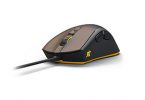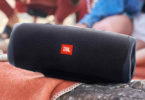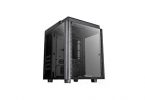Have you ever wondered about what lies under the hood of your R/C car or truck? What it is that makes your R/C vehicle tick? After today, you will know the answer to both of those questions. Don’t worry, it’s not as hard to grasp as it may seem at first. Even nowadays, the most complex R/C models are still fairly simple, design-wise.

All R/C vehicles are, at their core, just a motor, a few circuits and a battery, with a molded metal cage called a chassis that holds it all together and a plastic cover on top.
Learning about how R/C vehicles work isn’t just for those of us with curious minds, however. Understanding how the various components work, even on a basic level, will help those who choose to enter the R/C car or truck scene.
Motors - What Powers an R/C Vehicle
Motors are the cores of all R/C vehicles. In fact, motors power most of the mechanical contraptions we see around us.
Almost all R/C cars and trucks either have what’s called a “brushed” motor or a “brushless” one. Brushed and brushless motors are similar to one another, but also different in a lot of ways. However, they both work on direct current (DC), instead of the more widely known alternating current (AC).
If you don’t know how DC motors work, don’t worry. To put it simply, a DC motor has two parts, a stator, and a rotor. The stator refers to two magnets on the flanks (sides) of the rotor. The rotor, which is also a magnet, creates electricity by rotating. It rotates because of how it interacts with the two magnets beside it.
Still with us? Good. An electric motor has to have a source of power (electricity) in order to work. In an R/C vehicle’s case, that source of power can either be a battery (or several batteries) or nitro fuel. Most R/C cars and trucks use a battery, however.
To put it simply, the motor converts the raw power it gets from the battery into a mechanical movement. In an R/C vehicle’s case, that movement can be, for example, the wheels rotating, or the drivetrain moving.
Steering - How It Works
While the motor could, on paper, steer an R/C vehicle by itself, that’s not how most of today’s R/C vehicles work. Instead, they use what’s called a steering servo.
A steering servo’s job is to control the steering of a car/truck. Once it receives an electrical signal from the receiver (we’ll get to that too), it adjusts the vehicle’s steering arms accordingly.
Servos are similar to DC motors, but they’re a tad more complicated. After all, all motors have to do is either be on or off. Servos have to decode electrical signals into instructions such as “turn the servo arm by 15 degrees to the right”.
Speed - How It Works
“But wait, if all motors can do is either be on or off, how am I able to control how fast my truck is going?” That’s a great question with a fascinating answer! The way today’s R/C models do it is with an electronic speed control (ESC).
An ESC is a circuit that, basically, varies how fast a motor runs. To be precise, it doesn’t change how fast the motor turns, but instead, it switches the motor on and off very, very quickly.
If the ESC receives a signal that tells it to drive at full throttle, it will keep the motor on. If it receives a signal that tells it to drive at half throttle, it will have the motor on half of the time, and so on.
The “Remote Controlled” Part of R/C Vehicles
Lastly, let’s talk a bit about how R/C vehicles are controlled.
There are two parts to it: the remote control (the transmitter or Tx) and the receiver (Rx). The transmitter sends radio signals to the receiver, and the receiver acts on them. Usually, it sends electrical signals to the other components, such as the steering servo and the ESC (which we talked about earlier).
In the past, the transmitter and receiver worked like an AM/FM radio. Nowadays, most Tx/Rx pairs operate on a 2.4GHz band, using so-called “Digital Spread Spectrum” (DSS) techniques. That’s a very fancy way of saying that you’re guaranteed not to have any interference using the transmitter, unlike in the days of AM and FM.
Final Thoughts
There you have it! That was a quick look at the most important components of an R/C vehicle and how they work with each other. It wasn’t the most technical or in-depth description, but that should make it easier to grasp for those of us who aren’t in the know! If this article has sparked your curiosity, visiting a site like 10TrailTrucks will most definitely help provide you with a solid entry into the exciting hobby of RC.







Leave a Comment